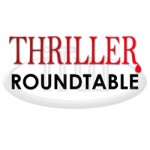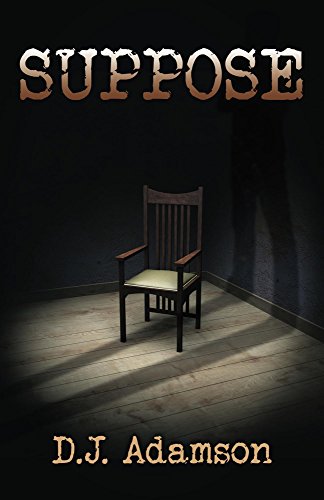

September 4 – 10: “Best symbolism employed in thrillers in recent years?”
 This week join ITW Members Lisa Towles, J. H. Bográn and D. J. Adamson as they describe some of the best symbolism employed in thrillers in recent years. Scroll down to the “comments” section to follow this thrilling and symbolic discussion!
This week join ITW Members Lisa Towles, J. H. Bográn and D. J. Adamson as they describe some of the best symbolism employed in thrillers in recent years. Scroll down to the “comments” section to follow this thrilling and symbolic discussion!
~~~~~
 Lisa Towles is a lifelong writer and musician living in the San Francisco Bay Area. Born and raised in New England, she has lived in Connecticut, New Mexico, and southwest England. Lisa’s four previous fiction publications were written under her previous name of Lisa Polisar. She got married in 2009 and changed her name to Towles. She is an award-winning journalist, where she wrote for numerous commercial magazines and literary journals, writing features and covering the Santa Fe art scene in New Mexico. Her previous books include Knee Deep, Blackwater Tango, The Ghost of Mary Prairie, Escape: Dark Mystery Tales, as well as a non-fiction book on jazz improvisation called Straight Ahead. Lisa’s newest release, Choke, will release on June 22, 2017 in trade paperback, Kindle, and numerous other digital formats.
Lisa Towles is a lifelong writer and musician living in the San Francisco Bay Area. Born and raised in New England, she has lived in Connecticut, New Mexico, and southwest England. Lisa’s four previous fiction publications were written under her previous name of Lisa Polisar. She got married in 2009 and changed her name to Towles. She is an award-winning journalist, where she wrote for numerous commercial magazines and literary journals, writing features and covering the Santa Fe art scene in New Mexico. Her previous books include Knee Deep, Blackwater Tango, The Ghost of Mary Prairie, Escape: Dark Mystery Tales, as well as a non-fiction book on jazz improvisation called Straight Ahead. Lisa’s newest release, Choke, will release on June 22, 2017 in trade paperback, Kindle, and numerous other digital formats.
 J. H. Bográn, born and raised in Honduras, is the son of a journalist. He ironically prefers to write fiction rather than fact. José’s genre of choice is thrillers, but he likes to throw in a twist of romance into the mix. His works include novels and short stories in both English and Spanish. His debut novel TREASURE HUNT, which The Celebrity Café hails as an intriguing novel that provides interesting insight of architecture and the life of a fictional thief, has also been selected as the Top Ten in Preditors & Editor’s Reader Poll. FIREFALL, his second novel, was released in 2013 by Rebel ePublishers. Coffee Time Romance calls it “a taut, compelling mystery with a complex, well-drawn main character.” He’s a member of the Short Fiction Writers Guild, Crime Writer’s Association, and the International Thriller Writers. He lives in Honduras with his family and one “Lucky” dog.
J. H. Bográn, born and raised in Honduras, is the son of a journalist. He ironically prefers to write fiction rather than fact. José’s genre of choice is thrillers, but he likes to throw in a twist of romance into the mix. His works include novels and short stories in both English and Spanish. His debut novel TREASURE HUNT, which The Celebrity Café hails as an intriguing novel that provides interesting insight of architecture and the life of a fictional thief, has also been selected as the Top Ten in Preditors & Editor’s Reader Poll. FIREFALL, his second novel, was released in 2013 by Rebel ePublishers. Coffee Time Romance calls it “a taut, compelling mystery with a complex, well-drawn main character.” He’s a member of the Short Fiction Writers Guild, Crime Writer’s Association, and the International Thriller Writers. He lives in Honduras with his family and one “Lucky” dog.
 D. J. Adamson is the author of the Lillian Dove Mystery series and the Deviation science fiction-suspense trilogy. Suppose, the second in the Lillian series has just been released. She also teaches writing and literature at Los Angeles colleges. And to keep busy when she is not writing or teaching, she is the Membership Director of the Los Angeles Sisters in Crime, Vice President of Central Coast Sisters in Crime and an active member of the Southern California Mystery Writers. Her books can be found and purchased in bookstores and on Amazon. Make friends with her on Facebook or Goodreads and LinkedIn.
D. J. Adamson is the author of the Lillian Dove Mystery series and the Deviation science fiction-suspense trilogy. Suppose, the second in the Lillian series has just been released. She also teaches writing and literature at Los Angeles colleges. And to keep busy when she is not writing or teaching, she is the Membership Director of the Los Angeles Sisters in Crime, Vice President of Central Coast Sisters in Crime and an active member of the Southern California Mystery Writers. Her books can be found and purchased in bookstores and on Amazon. Make friends with her on Facebook or Goodreads and LinkedIn.
- LAST GIRL MISSING with K.L. Murphy - July 25, 2024
- CHILD OF DUST with Yigal Zur - July 25, 2024
- THE RAVENWOOD CONSPIRACY with Michael Siverling - July 19, 2024
